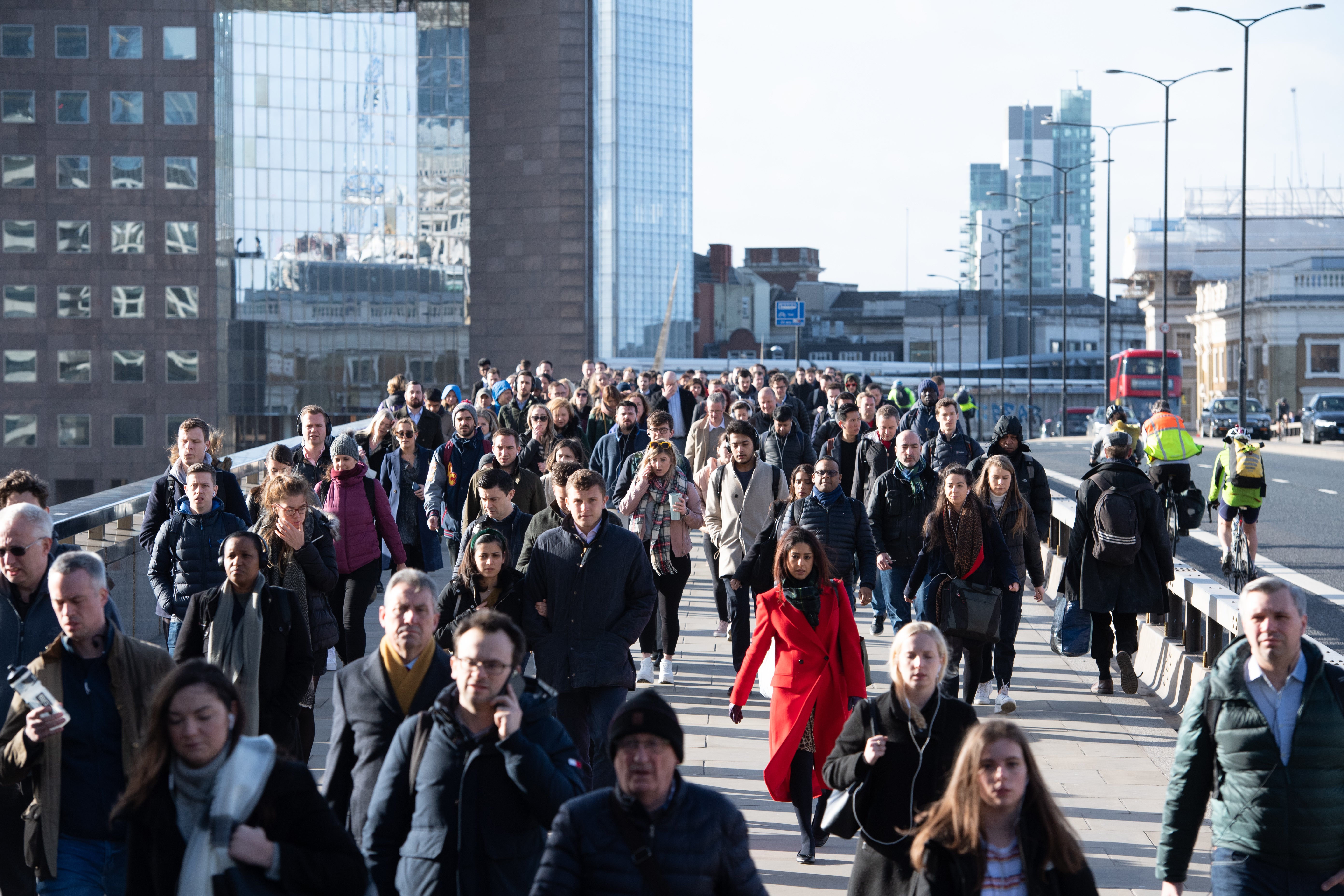Unemployment falls below pre-pandemic levels but pay growth hit by inflation
The number of workers on payrolls jumped by 275,000 between January and February to a fresh record of 29.7 million, the ONS said.

Your support helps us to tell the story
From reproductive rights to climate change to Big Tech, The Independent is on the ground when the story is developing. Whether it's investigating the financials of Elon Musk's pro-Trump PAC or producing our latest documentary, 'The A Word', which shines a light on the American women fighting for reproductive rights, we know how important it is to parse out the facts from the messaging.
At such a critical moment in US history, we need reporters on the ground. Your donation allows us to keep sending journalists to speak to both sides of the story.
The Independent is trusted by Americans across the entire political spectrum. And unlike many other quality news outlets, we choose not to lock Americans out of our reporting and analysis with paywalls. We believe quality journalism should be available to everyone, paid for by those who can afford it.
Your support makes all the difference.The number of jobless people in the UK has dropped below levels seen before the pandemic struck for the first time, but earnings continue to fall behind rocketing inflation, according to official figures.
The Office for National Statistics (ONS) said there were 1.34 million unemployed in the quarter to January, down 88,000 on the previous three months and below the 1.36 million recorded in December to February 2020.
But the figures revealed the tightening squeeze of the cost-of-living crisis, as regular pay failed to keep up with soaring inflation, with average weekly earnings excluding bonuses up 3.8% between November and January.
When taking rising prices into account, as measured by Consumer Prices Index (CPI) inflation, wages fell by 1.6% compared with a year earlier, according to the ONS.
Experts have warned that the pressure on household finances will intensify due to the Ukraine conflict, with eye-watering gas and fuel prices set to see inflation rise from 5.5% currently to nearly 9% or more in April.
Chancellor Rishi Sunak acknowledged concerns over the rising cost of living, but cheered “a year of falling unemployment and a stronger jobs market bounce-back than so many predicted”.
“I am confident that our labour market is in a good position to deal with the current global challenges, with payrolled employee numbers above pre-pandemic levels in every nation and region and redundancies at record lows,” he added.
The ONS figures showed the unemployment rate falling back once again, to a lower-than-expected 3.9% in the most recent quarter, down from 4.1% in the three months to December.
It came as the number of workers on payrolls jumped by 275,000 between January and February to a fresh record of 29.7 million, with the ONS saying demand for workers “remains strong”.86625
Vacancies also hit a new high, up 105,000 quarter on quarter to 1.3 million as firms scrambled to secure staff amid a recovering wider economy.
But a shrinking labour market, due mostly to older workers choosing to retire early throughout the pandemic, has also seen the number of employed Britons drop 12,000 to 32.5 million in the most recent quarter.
ONS chief economist Grant Fitzner said: “The labour market continues to recover from the effects of the pandemic, with the number of unemployed people falling below its pre-pandemic level for the first time and another strong rise in employees on payroll in February.”
Samuel Tombs, at Pantheon Macroeconomics, said the jobs market may start to come off the boil later this year.
“Labour demand will be hit by the increase in employers’ National Insurance contributions in April,” he said.
“In addition, the workforce should start to grow at its typical pre-Covid rate soon, as immigration recovers and some people who stayed in education or left the labour market due to Covid return.”
Investec economist Ellie Henderson said the jobs figures give the Bank of England’s Monetary Policy Committee (MPC) further reason to raise rates from 0.5% to 0.75% on Thursday.
She said: “The extent to which the tight labour market conditions translate into wage growth is a real concern for policymakers.
“We believe that this strong UK labour market report places more pressure on the MPC to raise the Bank rate once again on Thursday.”